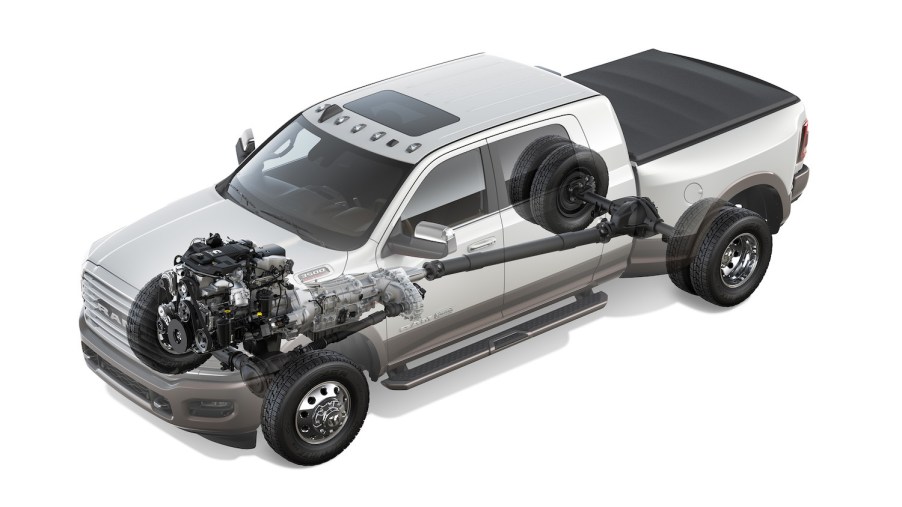
Who Actually Decides Which Trucks Are ‘Heavy Duty?’
The government reserves its “heavy duty” rating for vehicles with the GVWR of dump trucks and semi trucks. Auto manufacturers use “heavy duty” to refer to pickup trucks in the 3/4-ton class–with one interesting exception.
What does the government define as a ‘heavy duty’ truck
The U.S. government has a vehicle classification system used for taxes, emissions, and operator licenses. The phrase “heavy duty” is reserved for vehicles with a GVWR over 26,000 pounds. Examples include trucks built by Mack, Freightliner, and International–as well as the Ford F-750.

Our government classifies trucks not on their dimensions or their tow rating, but by their gross vehicle weight rating (GVWR). This is the maximum amount of vehicle and payload said the truck has been tested for.
Because the government uses the same classification system for everything from a Honda Ridgeline to a semi truck, most consumer vehicles are light duty. Full-ton pickup trucks (F-350, 3500 series, etc.) are officially “medium duty.”
Every truck that falls into the official “heavy duty” category is an industry-level body-on-frame vehicle or semi truck. “Heavy Duty” is split between Class 7 (26,001-33,000 pound GVWR) and Class 8 (33,001+ pound GVWR). This highest class is the domain of semi trucks and some custom fire trucks.
What do automakers define a a ‘heavy duty’ truck
Even though no traditional pickup truck falls into the government’s heavy duty category, automakers use heavy duty as an advertising phrase to describe most pickup trucks with a rating over a half-ton.

Most pickup trucks on the market fall neatly into three size categories: compact (unibody), midsize (body-on-frame), and full-size (also body-on-frame). These full-size trucks include the Ford F-Series and its competitors from Detroit and Japan. Full-size pickup trucks can be further broken down by their GVWR. The full-size light-duty pickup truck includes the F-150 and the 1500 series and are commonly referred to as half-ton trucks.
Half-ton is another advertising phrase with no actual relation to a pickup truck’s capacity. In fact, many half-ton trucks can haul much more than a ton and tow up to five tons. This puts them all in the government’s medium duty Class 2a with a GVWR between 6,001 and 8,500 pounds.
Most automakers refer to every pickup truck with a higher rating than the half-ton class as “heavy duty.” This includes Ford’s Super Duty series as well as the Heavy Duty pickup trucks from General Motors and Ram.
The 3/4-ton trucks include the F-250 and 2500s. They all have a GVWR between 8,501 pounds and 10,000 pounds. These trucks fight into the government’s “light duty” Class 2b. But these are the lightest trucks that automaker refer to as “heavy-duty.”
The full-ton pickup trucks boast a GVWR of 10,001 to 14,000 pounds. This officially bumps these trucks into “medium duty” Class 3. These trucks are also advertised as “heavy-duty.”
What large trucks aren’t advertised as heavy duty?
Ford’s 3/4-ton and up F-series trucks carry the name “Super Duty” instead of GM and Ram’s “Heavy Duty” label. Nissan’s Titan XD is in Class 2b, alongside the F-250 and 2500s. But Nissan does not advertise this truck as heavy duty.

The Nissan Titan XD features heavy-duty springs and a higher payload capacity than the regular Titan. This bumps its GVWR a few digits over the 6,001-pound cutoff.
That said, the Titan XD is not capable of nearly the payload or tow-rating that most “heavy duty” pickup trucks offer. For this reason, Nissan advertises the Titan XD as a “medium duty” pickup truck, an honest choice that helps shape buyer expectations for this unique pickup.



